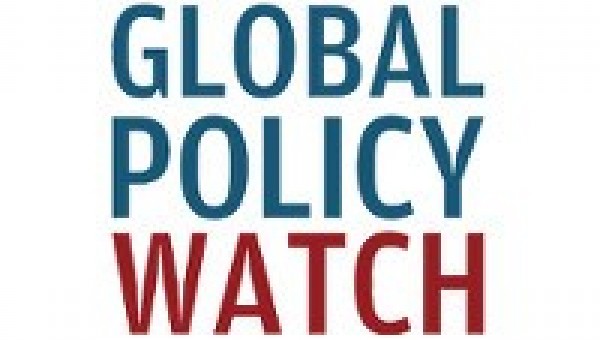News

By Elena Marmo
The ways of working and tensions within the Second Committee are not unique to its agenda and delegates, but rather manifestations of greater challenges across Committees, and UN organs. The Committee’s Bureau consists of Member State Representatives from all UN regions. This year’s 74th Session was chaired by Cheikh Niang, Ambassador and Permanent Representative of Senegal to the United Nations, supported by Vice-Chairs Ahmad Saif Al-Kuwari of Qatar, Yuliana Angelova of Bulgaria, and Anat Fisher-Tsin of Israel and Rapporteur David Mulet of Guatemala. The Bureau chairs meetings, appoints facilitators for informal negotiations on resolutions and are responsible for seeing the Committee’s programme of work is completed. Distinct from the Bureau is the Secretariat, comprised of independent UN staff. The Second and Third Committee’s Secretariats are housed and staffed by the ECOSOC Affairs Branch, which is also responsible for conferencing for ECOSOC, the Peacebuilding Commission, Commission on the Status of Women (CSW) and the HLPF. In addition to the Secretariat, the Second Committee sees substantive contributions in the form of reports and guidance documents from actors across the UN System, among them: UNCTAD, FfD Office, Department for Economic and Social Affairs on behalf of the Secretary-General, and the UN Environment Programme (UNEP).
In the Second Committee and various others UN fora, Member States choose to participate both individually and through informal or formal positional or geographical coalitions, with an elected Representative on a fixed term. The most active in the Second Committee include the Group of 77 and China (G77 and China), the European Union (EU), Canada, Australia, and New Zealand (CANZ), the Small Island Developing States (SIDS) and the Caribbean Community (CARICOM). Given the limited capacity of small developing state delegations to the UN, the G77 and China relies heavily on its coalition representation, particularly when negotiating texts and drafting agreed upon language.
Due to the inability of small delegations to cover the many simultaneous meetings across all of the General Assembly Committees, the coalition statements and draft resolutions, while presented by one Member State (or Observer) reflect a pre-negotiated position on behalf of all members of the G77 and China. Notably, the 2019 representative for the G77 and China has been the State of Palestine, represented in the Second Committee by Nada Tarbush and Saed Katkhuda. In 2020, the Representative will be from the State of Guyana.
For a number of decades, Member States have undertaken both official debate on the various agenda items as well as informal consultations and negotiations on resolutions with the aim to adopt the resolutions by consensus. The process of reaching consensus means often some substance is dropped, as illustrated in this 74th Session of the Second Committee. In this article several examples of the failure and/or impediment of consensus-reaching will be explored.
While themes explored in the Second Committee are often reiterated in ECOSOC, the Executive Boards of UN Funds and Programmes and the HLPF, the Second Committee has a different role. It provides policy guidance and holds the capacity to mandate, request or call for certain types of policy or research work to be done across the UN System. These actions keep items on the agenda and the authorities responsible for carrying out the research and work determines the “slant” or scope and as such the potential for that work to advance more robust and innovative agendas in the future. On macroeconomic governance this is particularly salient, where it is clear that both the drive for consensus and competition for control of the agenda have led to certain substance dropping altogether.
